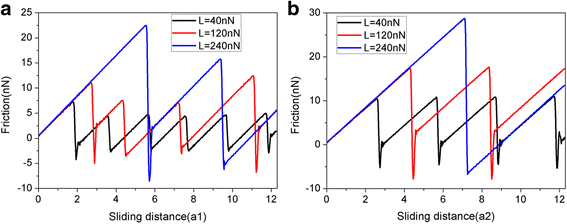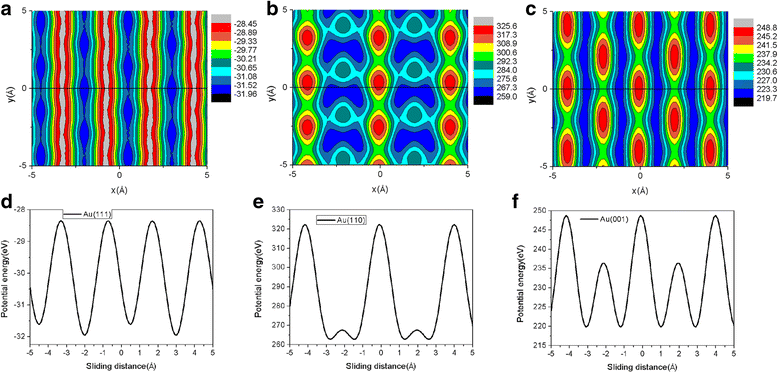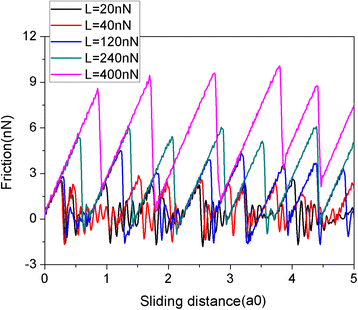Study of Nanoscale Friction Behaviors of Graphene on Gold Substrates Using Molecular Dynamics
- PMID: 29396735
- PMCID: PMC5796957
- DOI: 10.1186/s11671-018-2451-3
Study of Nanoscale Friction Behaviors of Graphene on Gold Substrates Using Molecular Dynamics
Abstract
In this paper, we investigate the friction behaviors of graphene flakes sliding on a gold substrate using molecular dynamics simulations. The effects of flake size, flake shape, relative rotation angle between flake and substrate, and crystal orientation of substrate on the friction process are thoroughly studied. It is found that under the same load, the average friction forces per atom are smaller for a bigger graphene flake, which exhibits an obvious size effect. It is also shown that flake shape is critical in determining the friction in the sliding process. The average friction forces per atom for the square flake are much bigger than those for the triangular and round flakes. Moreover, the average friction forces per atom for the triangular flake are the smallest. We also find that the orientation of graphene flake relative to gold substrate plays a vital role in the friction process. The friction forces for the graphene flake sliding along the armchair direction are much bigger than those for the flakes with rotation. In addition, it is also found that single crystalline gold substrate exhibits a significant anisotropic effect of friction, which is attributed to the anisotropic effect of potential energy corrugation. These understandings not only shed light on the underlying mechanisms of graphene flake sliding on the gold substrates but also may guide the design and fabrication of nanoscale graphene-based devices.
Keywords: Friction; Graphene; Molecular dynamics; Single crystalline gold.
Conflict of interest statement
Competing Interests
The authors declare that they have no competing interests.
Publisher’s Note
Springer Nature remains neutral with regard to jurisdictional claims in published maps and institutional affiliations.
Figures











References
Grants and funding
LinkOut - more resources
Full Text Sources
Other Literature Sources

